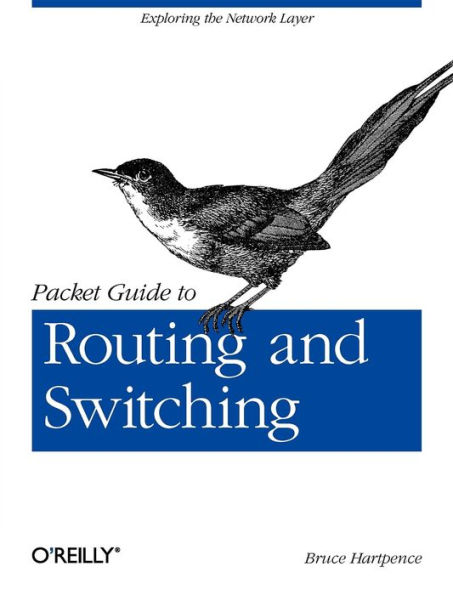Go beyond layer 2 broadcast domains with this in-depth tour of advanced link and internetwork layer protocols, and learn how they enable you to expand to larger topologies. An ideal follow-up to Packet Guide to Core Network Protocols, this concise guide dissects several of these protocols to explain their structure and operation.
This isn’t a book on packet theory. Author Bruce Hartpence built topologies in a lab as he wrote this guide, and each chapter includes several packet captures. You’ll learn about protocol classification, static vs. dynamic topologies, and reasons for installing a particular route.
This guide covers:
- Host routing—Process a routing table and learn how traffic starts out across a network
- Static routing—Build router routing tables and understand how forwarding decisions are made and processed
- Spanning Tree Protocol—Learn how this protocol is an integral part of every network containing switches
- Virtual Local Area Networks—Use VLANs to address the limitations of layer 2 networks
- Trunking—Get an indepth look at VLAN tagging and the 802.1Q protocol
- Routing Information Protocol—Understand how this distance vector protocol works in small, modern communication networks
- Open Shortest Path First—Discover why convergence times of OSPF and other link state protocols are improved over distance vectors
Go beyond layer 2 broadcast domains with this in-depth tour of advanced link and internetwork layer protocols, and learn how they enable you to expand to larger topologies. An ideal follow-up to Packet Guide to Core Network Protocols, this concise guide dissects several of these protocols to explain their structure and operation.
This isn’t a book on packet theory. Author Bruce Hartpence built topologies in a lab as he wrote this guide, and each chapter includes several packet captures. You’ll learn about protocol classification, static vs. dynamic topologies, and reasons for installing a particular route.
This guide covers:
- Host routing—Process a routing table and learn how traffic starts out across a network
- Static routing—Build router routing tables and understand how forwarding decisions are made and processed
- Spanning Tree Protocol—Learn how this protocol is an integral part of every network containing switches
- Virtual Local Area Networks—Use VLANs to address the limitations of layer 2 networks
- Trunking—Get an indepth look at VLAN tagging and the 802.1Q protocol
- Routing Information Protocol—Understand how this distance vector protocol works in small, modern communication networks
- Open Shortest Path First—Discover why convergence times of OSPF and other link state protocols are improved over distance vectors

Packet Guide to Routing and Switching: Exploring the Network Layer
180
Packet Guide to Routing and Switching: Exploring the Network Layer
180Related collections and offers

Product Details
| ISBN-13: | 9781449315245 |
|---|---|
| Publisher: | O'Reilly Media, Incorporated |
| Publication date: | 08/25/2011 |
| Sold by: | Barnes & Noble |
| Format: | eBook |
| Pages: | 180 |
| File size: | 7 MB |
